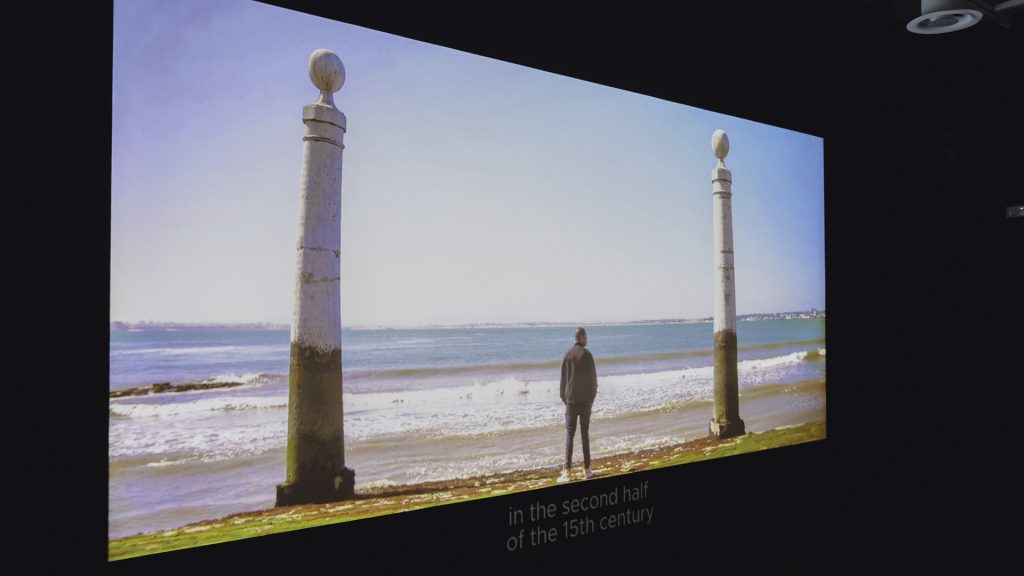
At the Central Pavilion in the Giardini, Fred Kudjo Kuwornu’s video, with its strong narrative and visual power, explores the forgotten history of Africans in Europe during the Renaissance.
In this edition of the Biennale Arte, curator Adriano Pedrosa has surprisingly included few videos in the exhibition Foreigners Everywhere, even though videos are prominently featured in the National Pavilions – such as Julien Creuzet’s beautiful immersive work from France, Sir John Akomfrah’s spectacular piece Listening All Night to the Rain from the UK, and the ironic work of Brazilian Guerreiro Do Divino Amor from Switzerland. However, among the few video works in Foreigners Everywhere, Fred Kudjo Kuwornu’s film stands out for its intensity, subject matter, and quality.
Kuwornu, an artist of African origin with Italian, American, and Ghanaian nationalities, born in Bologna and based in New York, has long worked on themes of blackness, racism, and minority rights through his documentaries. His powerful documentary We Were Here – The Untold History of Black Africans in Renaissance Europe, at the Central Pavilion in the Giardini, recounts in nearly an hour the stories of Africans in Europe during the 15th and 16th centuries. The artist also acts and narrates.
Supported by interviews with scholars and writers, Kuwornu traces his journey through Italy, Spain, Portugal, the UK, the Netherlands, the US, Ghana, and Brazil to give voice to incredible and often overlooked figures simply for being African. Kuwornu aimed to align with this Biennale’s theme Foreigners Everywhere by including migrant and refugee actors in the video project to explain how Africans have always lived in Europe for centuries, even though their presence has been diluted over three generations, despite being traceable in numerous historical documents and visual representations of the time. Indeed, if we look closely, we will find many people of color in the paintings of great artists like Titian, Caravaggio, and Velasquez, though always relegated to roles of servitude, not to mention Othello, the Moor of Venice, celebrated by Shakespeare.
Kuwornu’s visual narrative reveals the story of Alessandro de’ Medici, the first Duke of Florence and the first black head of state in the Western world, the illegitimate son of Pope Clement VII and an African slave. A portrait of him by Vasari exists in the Uffizi, and his story was also depicted in the 2021 short film Il Moro by Daphne di Cinto. The documentary also covers the life of Saint Benedict the Moor, co-patron of Palermo, a Franciscan, Ethiopian slave, born in 1524 in Messina. The popular devotion to the saint is immense, with a giant mural in Ballarò highlighting his significance. Additionally, it features figures like Joao Panasco, a Portuguese knight of the Order of Santiago, and the slave painter Juan de Pareja, Velasquez’s assistant. Kuwornu’s work is not only a piece of advocacy but also a moment of reflection on denied rights, primarily that of citizenship.